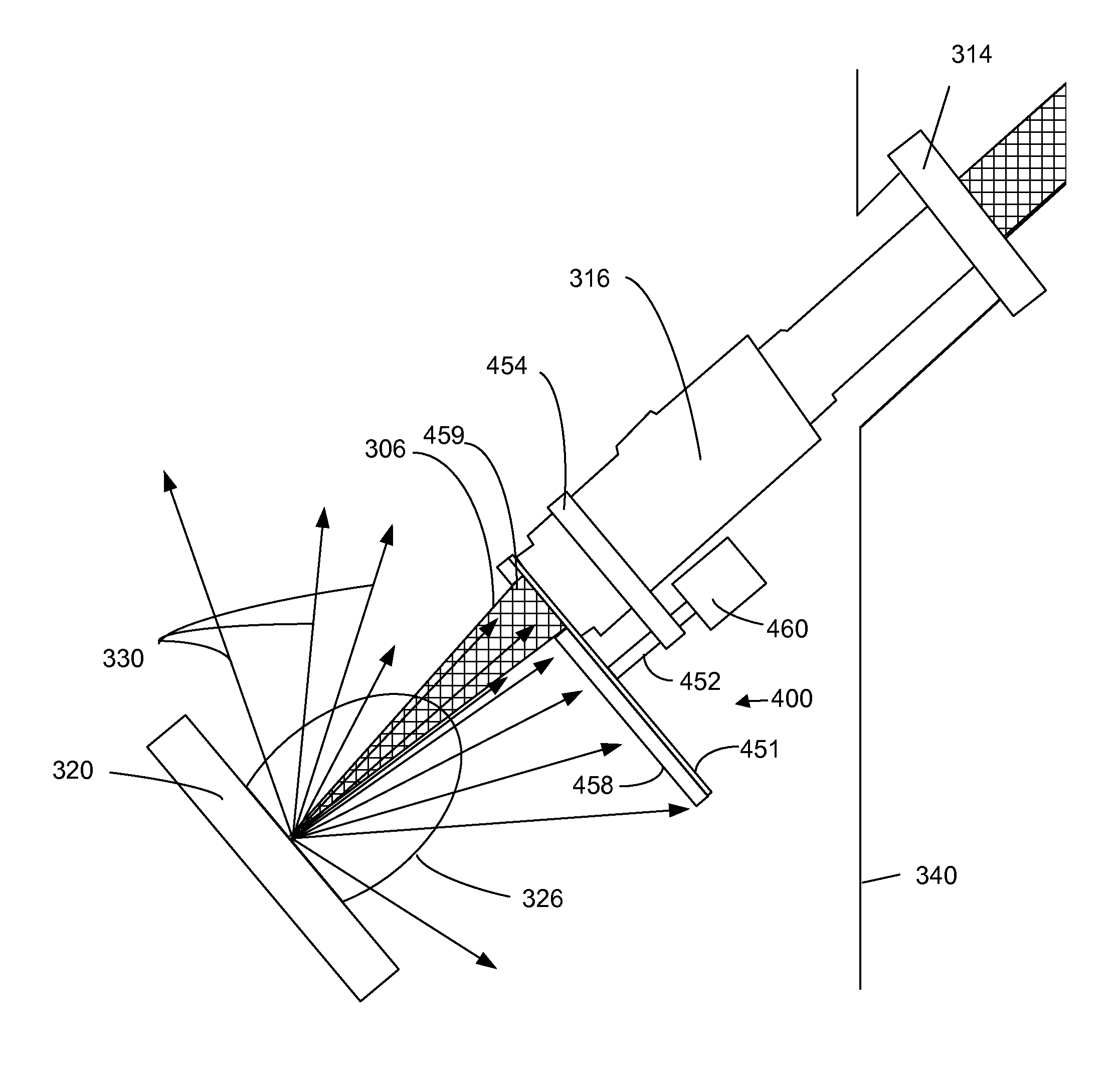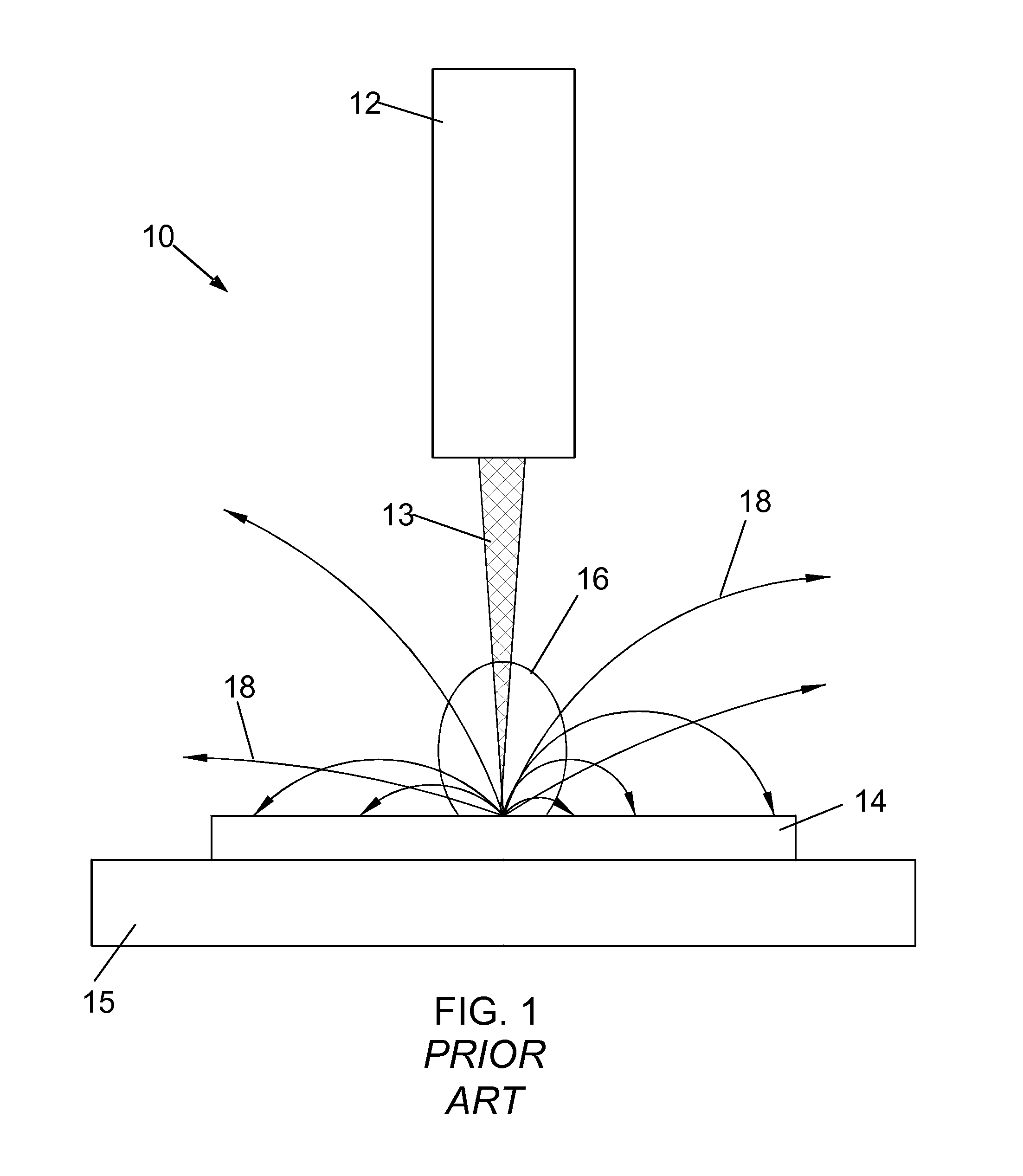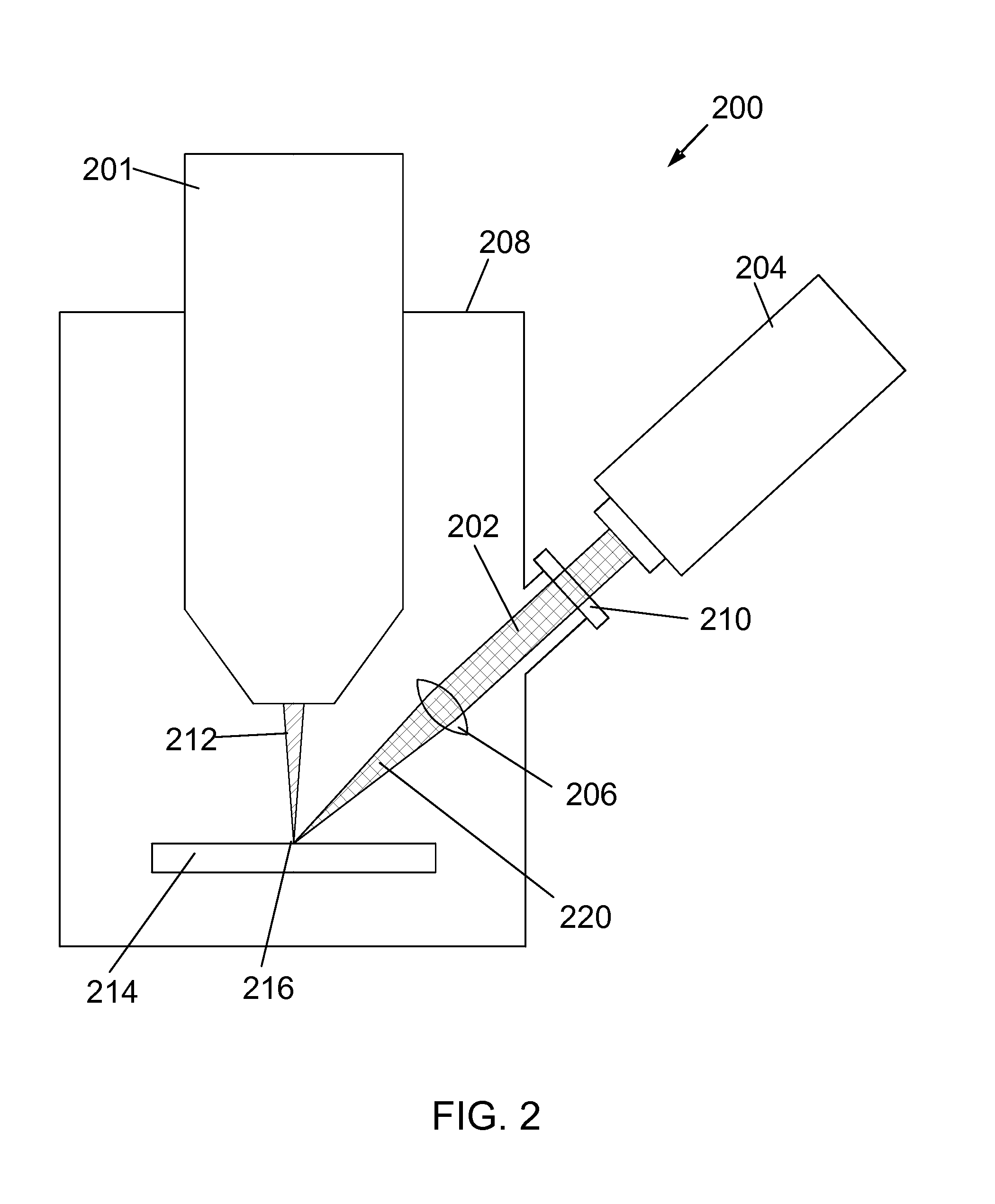System for Protecting Light Optical Components during Laser Ablation
a technology for protecting light optical components and laser ablation, which is applied in the direction of laser beam welding apparatus, manufacturing tools, welding/soldering/cutting articles, etc., can solve the problems of high-precision milling or sample removal often requiring tradeoffs, ion beam damage to sample surfaces, and limited processing rate of lmis fib
- Summary
- Abstract
- Description
- Claims
- Application Information
AI Technical Summary
Benefits of technology
Problems solved by technology
Method used
Image
Examples
Embodiment Construction
[0026]Applicants have discovered that the use of laser ablation within a vacuum chamber involves difficulties with debris buildup on the laser optics that are not seen in atmospheric laser ablation. Not only are the common methods for mitigating debris buildup not practical for ablation formed inside a vacuum chamber, as discussed above, but the problem is actually greater for ablation performed in a vacuum because debris will actually travel farther since it is not slowed by collisions with gas molecules in the atmosphere.
[0027]Preferred embodiments of the present invention thus provide a protective transparent screen that can be used to shield the laser optical components during laser ablation. Preferred embodiments should be easily replaced or repositionable without breaking vacuum in the sample chamber.
[0028]FIG. 2 shows a dual beam system having a combination charged particle beam column 201 and laser 204. Such a dual beam system is described in U.S. Pat. App. No. 2011 / 0248164 ...
PUM
| Property | Measurement | Unit |
|---|---|---|
| energy | aaaaa | aaaaa |
| transparent | aaaaa | aaaaa |
| transparent conductive | aaaaa | aaaaa |
Abstract
Description
Claims
Application Information
 Login to View More
Login to View More - R&D
- Intellectual Property
- Life Sciences
- Materials
- Tech Scout
- Unparalleled Data Quality
- Higher Quality Content
- 60% Fewer Hallucinations
Browse by: Latest US Patents, China's latest patents, Technical Efficacy Thesaurus, Application Domain, Technology Topic, Popular Technical Reports.
© 2025 PatSnap. All rights reserved.Legal|Privacy policy|Modern Slavery Act Transparency Statement|Sitemap|About US| Contact US: help@patsnap.com



